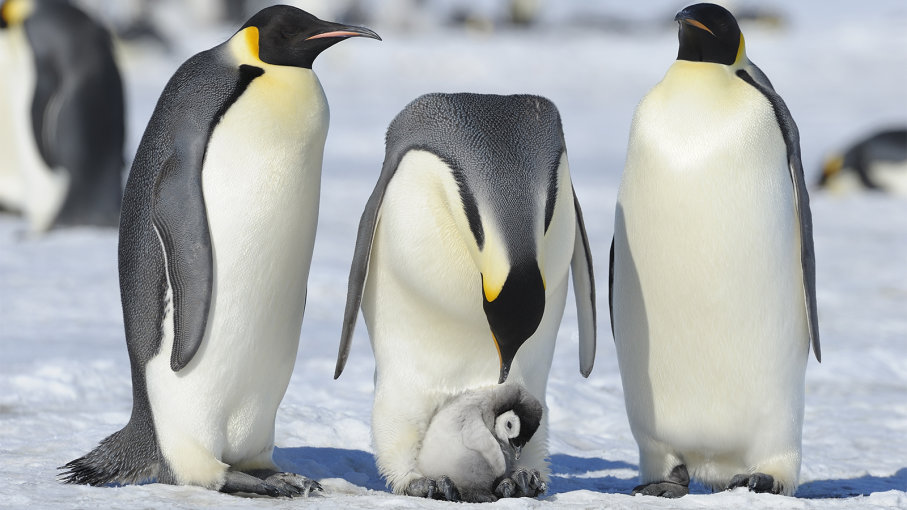Penguins! See below for penguin books, penguin math, penguin science, penguin crafts, and where to buy a genuine made-by-a-penguin painting.
Table of Contents
FICTIONAL PENGUINS
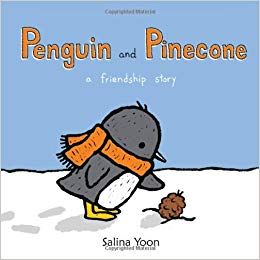 |
In Salina Yoon’s Penguin and Pinecone (Walker Children’s Books, 2012), a little penguin in a fuzzy orange scarf finds a “curious object” in the snow. It’s a pinecone and the two form an unlikely friendship – though Penguin’s Grandpa explains that a pinecone can only thrive in a warmer forest “far, far away.” Finally Penguin takes his friend there and leaves him – only to return, years later, to find a tall pine tree with a fuzzy orange scarf tied around the top. For ages 3-7. |
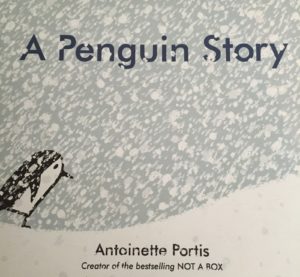 |
In Antoinette Portis’s A Penguin Story (HarperCollins, 2008), Edna, a penguin – yearning for something other than white ice, black night, and blue sea – sets out in search of color. She finds it in an orange Antarctic research station – but that only makes her wonder what else might be out there. For dreamers ages 4-7. |
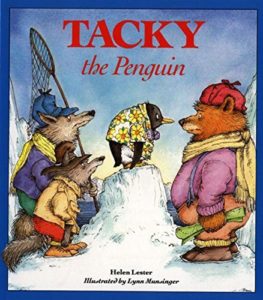 |
The title character of Helen Lester’s Tacky the Penguin (Houghton Mifflin Harcourt, 1990) is a nonconformist penguin who sports a gaudy Hawaiian short and doesn’t fall in line with his elegant penguin compatriots, Goodly, Neatly, Perfect, Lovely, and Angel. However, the wildly unconventional Tacky proves his worth when a gang of hunters arrive. For ages 4-8. |
| Tacky the Penguin is a Reader’s Theater play based on the book, with parts for five narrators, six penguins, and four hunters. | |
| The Tacky the Penguin Activity Kit has party ideas, Tacky-friendly recipes, printable puzzles and stick puppets, and a complete list of the Tacky the Penguin books. | |
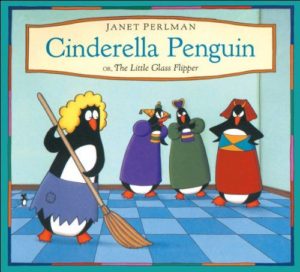 |
Janet Perlman’s Cinderella Penguin (Puffin, 1995) is a perfectly delightful retelling of the Cinderella story, complete with a charming penguin prince, a fairy godmother penguin, and a little glass flipper. For ages 4 and up. |
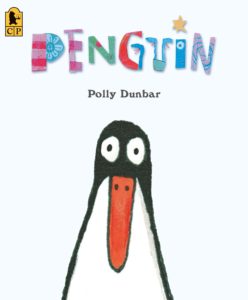 |
In Polly Dunbar’s Penguin (Candlewick, 2010), Penguin is Ben’s disappointing birthday present – but nothing Ben does will make Penguin speak a word (or even giggle). He tries to amuse Penguin; he makes fun of Penguin; he ignores Penguin – but Penguin says nothing. Until, that is, a passing lion eats Ben, and Penguin comes to the rescue. You’ll love Dunbar’s deadpan Penguin illustrations. For ages 4-8. |
| See Dunbar’s Penguin on YouTube. It’s a charmer. | |
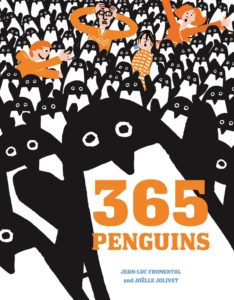 |
In Jean-Luc Fromental’s hilarious 365 Penguins (Harry N. Abrams, 2006), on New Year’s Day, a delivery man drops off a box containing a penguin – and an anonymous note that reads “I’m number 1. Feed me when I’m hungry.” There follow deliveries of penguin after penguin, one for each day of the year – with a lot of accompanying mathematical scramble to organize and care for the rapidly accumulating penguins. (Pack them into a 216-penguin cube?) The puzzle is finally solved at the end of the year – it’s a plan of Uncle Victor, the ecologist, to secretly export endangered penguins to the North Pole. Off he goes with the birds and all is peaceful – until a delivery man rings the doorbell and drops off one polar bear. For ages 4-9. |
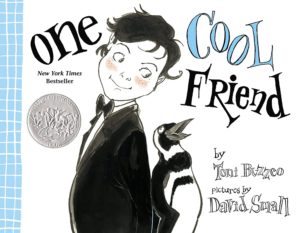 |
In Toni Buzzeo’s One Cool Friend (Dial, 2012), very proper, bowtie-wearing Elliot falls for the elegant penguins at the zoo – and gets permission from his distracted father (he’s on a bench, reading National Geographic) to have a penguin of his own. Rather than a plush penguin from the gift shop, Elliot picks one from the penguin pool and pops it into his backpack. Elliot figures out how to raise his penguin in his room (with ice and frozen anchovy pizzas) and names him Magellan. It all looks like a perfect storm of misunderstandings between father and son – until, at the end, readers discover that Elliot’s father has been concealing a Galapagos tortoise named Captain Cook. For ages 5-8. |
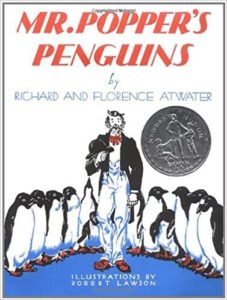 |
By Richard and Florence Atwater, Mr. Popper’s Penguins (Little, Brown, 1992) – originally published in 1938 – is the story of a house painter who dreams of polar exploration, and who receives as a present from explorer Admiral Drake a penguin named Captain Cook. Eventually a mate is found for Captain Cook and soon the Poppers have an entire family of penguins – at which point Mr. Popper, strapped for cash, decides to turn the penguins into a circus act and take the show on the road. For ages 7-11. |
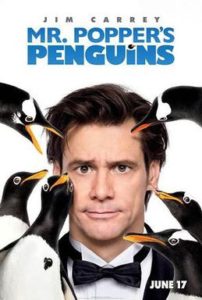 |
The 2011 movie version of Mr. Popper’s Penguins, with Jim Carrey as Mr. Popper, is rated PG. Only vaguely based on the book. |
NONFICTIONAL PENGUINS
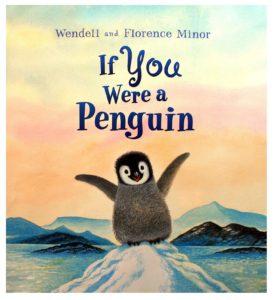 |
By Florence Minor – and illustrated with wonderful paintings by Wendell Minor – If You Were a Penguin (Katherine Tegen Books, 2008) is a delightful account of all the things you could do if only you were a penguin, from flying underwater to tobogganing in the snow to singing a duet. Included are lists of Penguin Fun Facts and informational penguin websites. For ages 4-7. |
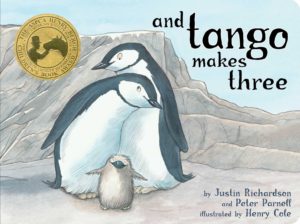 |
In Justin Richardson and Peter Parnell’s And Tango Makes Three (Simon and Schuster, 2005) – based on a true story from New York City’s Central Park Zoo – a pair of male penguins share a nest. Given an egg to nurture by a sympathetic zookeeper, the two hatch a little daughter, Tango, who becomes the only penguin chick in the zoo to have “two daddies.” A sweet, though much-contested, story for ages 4-7. |
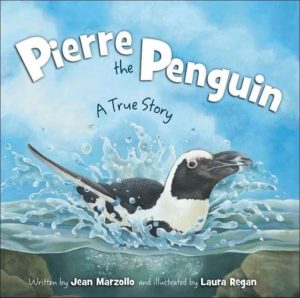 |
Jean Marzollo’s rhyming Pierre Penguin (Sleeping Bear Press, 2010) is based on the true story of an African penguin at the California Academy of Sciences who begins to lose his feathers, and soon is too cold to swim. A creative biologist comes up with a clever solution: a little penguin wetsuit. For ages 4-7. |
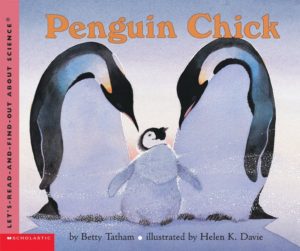 |
Betty Tatham’s Penguin Chick (HarperCollins, 2001) – in the Let’s-Read-and-Find-Out Science series – is a simple nonfiction account of the laying and hatching of a emperor penguin’s egg. Illustrated with watercolor paintings. For ages 4-8. |
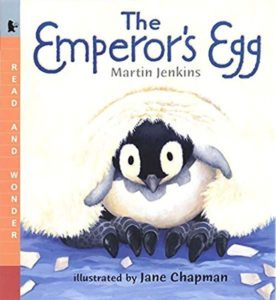 |
Martin Jenkins’s The Emperor’s Egg (Candlewick, 2002) is the story of how the male emperor penguin – largest of all penguins – spends two months without food, standing with an egg on his feet. For ages 4-9. |
 |
Anne Schreiber’s Penguins (National Geographic Children’s Books, 2009) covers, in 32 creatively designed pages, where penguins live, what they eat, and how they spend their lives. Included are maps, boxes of useful “Bird Words,” and a lot of great color photographs. For ages 4-8. |
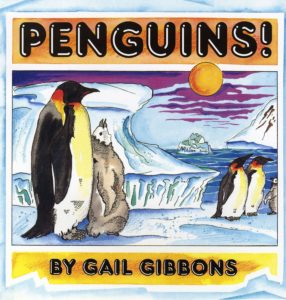 |
For the same age group, also see Gail Gibbons’s Penguins! (Holiday House, 1999). |
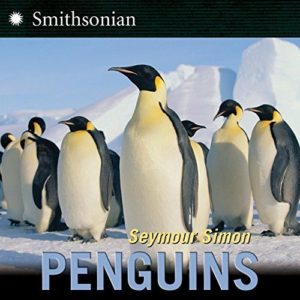 |
Seymour Simon’s Penguins (HarperCollins, 2009) covers all the basics of penguins with an informational text, full-page color photographs, and lots of fascinating facts. For ages 6-10. |
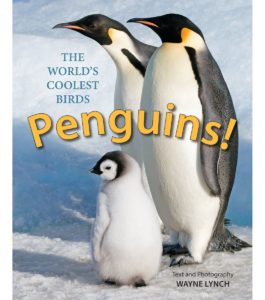 |
By field biologist and penguin addict Wayne Lynch, Penguins! (Firefly Books, 1999) covers – in 64 pages – penguin families, locomotion, food, mating habits, and enemies. Illustrated with color photographs. For ages 9-12. |
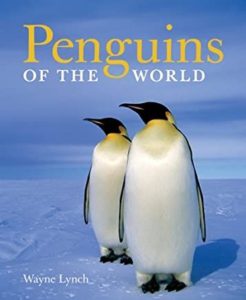 |
Also by Wayne Lynch, Penguins of the World (Firefly Books, 2007) has more detailed information for teenagers and adults. |
| Beyond Penguins and Polar Bears focuses on penguins who don’t live in Antarctica. Included at the website are project suggestions and a reading list. | |
| Check out Live Penguin Cams from the California Academy of Science. | |
| From LiveScience, Penguins has a collection of excellent articles (with photos and video clips) on many aspects of penguins. | |
| Penguin Sentinels is an informational article and video on temperate Galapagos penguins. |
